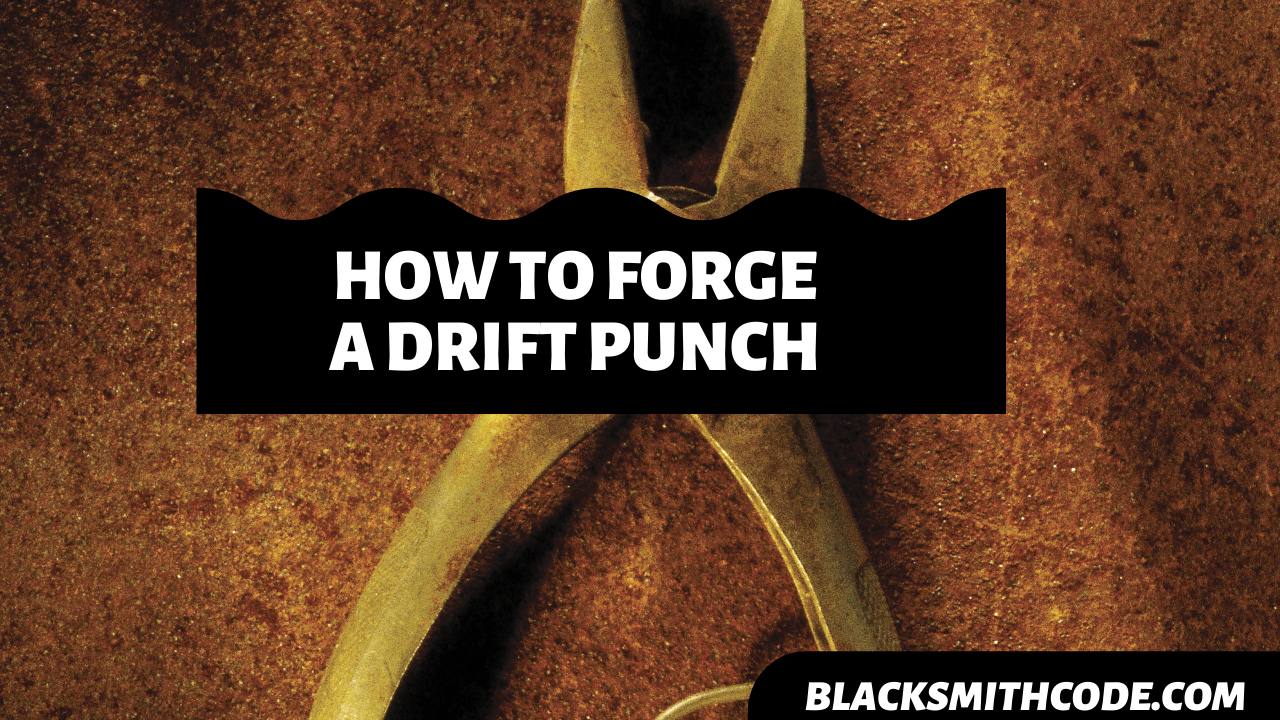Do you know you can make forging essential blacksmithing tools a hobby? Drift punch is one of the most essential tools in blacksmithing processes. You can learn how to forge a drift punch, otherwise called a drift pin.
If making a drift is a crucial process, then, the material or tool in making it is also essential. Instead of spending an enormous amount of money on purchasing some necessary tools, you can quickly learn how to forge them on your own.
Besides learning it for your personal use, you can also make it for commercial purposes and make substantial money. If you are interested in learning how to make a valuable blacksmithing tool, then the information you will find below is priceless.
We will be taking you through a simple and actionable stepwise guide on how to forge a drift punch. You need to set your mind on the fact that this process is not in any way complicated. All you need is to learn the technique and get all the essential materials for the procedure.
Instructions on How to Forge a Drift Punch
Step 1: Gather Your Materials
Besides getting your tools, getting the appropriate materials for the process is equally essential. Here you would need a rod with a sizable diameter. Drift punch is also called a drift pin; therefore, all you need is a tiny rod.
It is better to use mild steel with low carbon content. This type of steel will offer you the desirable strength.
Step 2: Measure and Cut
Here, all you have to do is cut out the length you need for the project from the bulk of steel. You can make use of a hacksaw or other suitable cutting technique for this process.
Step 3: Heating
Now, it is time to take your drift pin to the forge. You have to heat the steel to a desirable temperature to make it more malleable and more comfortable to forge. Leave the steel rod in the forge until the color changes to orange color, or the temperature approaches 800℃.
Step 4: Hammering
Hammering is the most technical part of the entire process. The hammering technique will determine the end shape and final output of the project.
Quick Steps
- Retrieve the steel from the forge once it reaches a workable temperature.
- Hammer gently against an anvil. It is essential to keep in mind that you are only forming the shape and not flattening the rod. This knowledge will guide you through the best hammering technique to use.
- The part you would be working on majorly is the tip of the rod. Hammer it on all sides to make it pointed. While trying to do this, be careful not to flatten the mouth of the tool instead.
- Gently hammer the other sides of the rod only to ensure that they have a regularly flat body.
- You might have to reheat the rod multiple times before the end of the process.
Step 5: Heat Treatment
You must keep in mind that you must fine-tune your drift punch to help it withstand the rigor of hammering. The process of heat treating the rod includes annealing, tempering, and hardening.
Quick Steps
- Start by heating the drift punch to a workable temperature (Usually around 800℃).
- Leave it to cool down slowly at room temperature. Repeat this process two or more times to properly temper the steel.
- Heat the steel to malleable temperature again. This time, you would be cooling the steel rapidly in quenching water or quenching oil to anneal the steel.
- Return the drift punch to the forge and heat it to about 1/4 of the malleable temperature (usually around 220℃).
- Allow the steel to cool slowly at room temperature.
- Repeat the process for about 2-3 times till you obtain your desired texture.
Step 6: Grinding and Finishing
By now, your steel should be hard enough for grinding. The primary aim of grinding is to smoothen the edges of the drift punch and remove all excesses. You can polish the tool if you wish to, and you can prevent rusting by coating it in a mixture of turpentine, linseed oil, and wax.
FAQs on How to Forge a Drift Punch
Question
Are there other types of drift punches?
There are different types of drift punches. Their sizes and diameter often categorize them. The other categories of drift punches include; picking punch, starting punch, pin punch, align punch, and center punch. Each of these types of punch has its unique functions and applications.
Question
What are the uses of drift punch?
The primary use of a drift punch is to make a drifting eye. However, the size of the drifting eye can now vary, depending on its purpose. A drift punch is notable for making a relatively smaller hole.
Question
Must I temper the drift punch?
It is essential to temper, anneal, and harden your drift punch to make it suitable. If the drift punch is too soft, it would be hard to drive it through other steel while attempting to make a drifting eye.
Question
Can I use a chisel in place of drift punch?
First off, you should always keep in mind that one of the primary uses of a chisel is for cutting. However, some blacksmiths have improvised to start using it to make a drift hole. It is particularly suitable for cutting midway through the drifting eye.
In the absence of a drift punch, you can improvise and make use of a chisel. However, it is not advisable to use a chisel while trying to make a tiny drift eye or a precise diameter hole.
Video on How to Forge a Drift Punch
Precautions and Warnings
- Use suitable tools throughout the process.
- Ensure the use of gloves and other safety accessories.
- Handle hot steel with your tongs rather than bare hands to prevent burn.
- Ensure the proper ventilation of your workspace to avoid clumsiness.
- Only use tools that you are familiar with to avoid accidents.





